

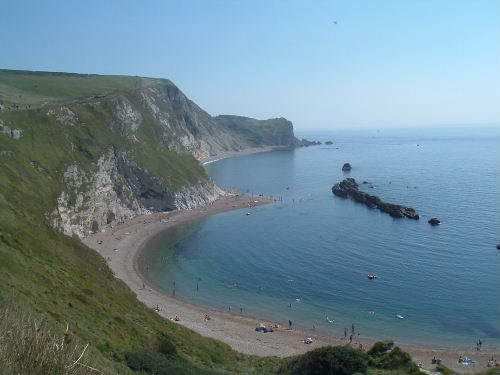
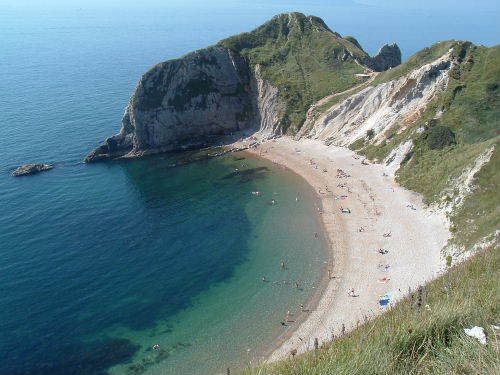
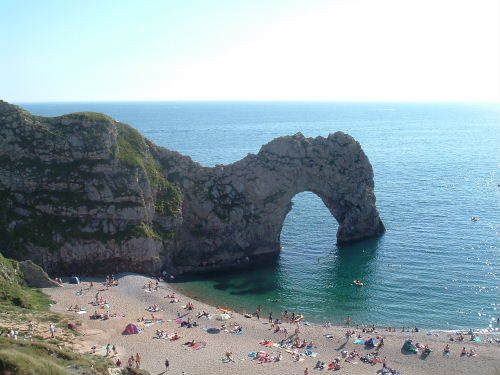

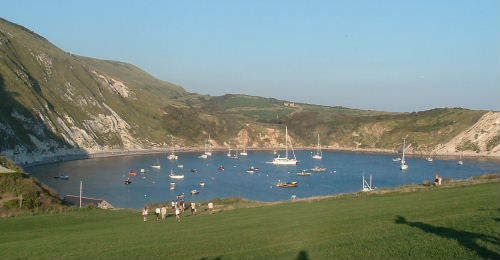
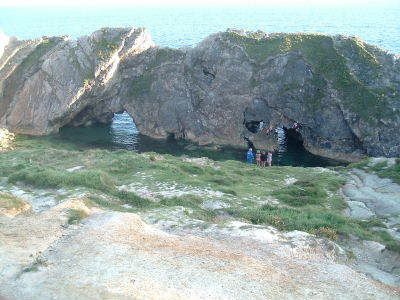
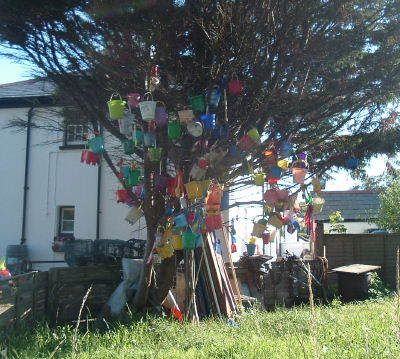
Labels: Dorset
According to one legend the infant Arthur was thrown by the waves on the beach by Merlin's cave. King Arthur's time in history was in the fifth century. He is identified with the known history of a Celtic chieftain of the period who led his countrymen in the West in their resistance against Saxon invaders. Many believe that Arthur was of a mixed Roman and British parentage.
It is always difficult to prove if Arthur did exist but certainly there was a great warrior in the West of England who had some kind of fortress where Tintagel Castle, (King Arthur's Castle) is today. The original fortress has gone but archaeologists have found proof in their diggings on the Tintagel Castle, that fifth century citizens lived on the site. The replacement Castle was built between 1230-1236 & is now nearly 800 years old. Within two hundred years the Castle was in ruins & remains so to this day. Earl Richard of Cornwall paid for the construction of the Castle & it is owned by the Duke of Cornwall.
For many years it has been managed by English Heritage, who are the agents for the Duke.
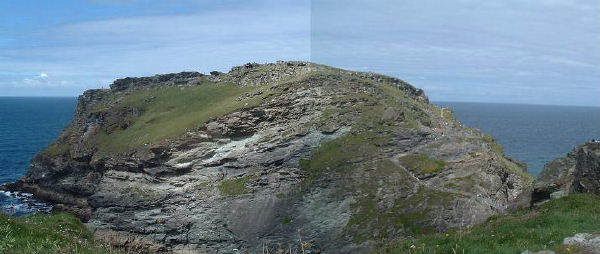
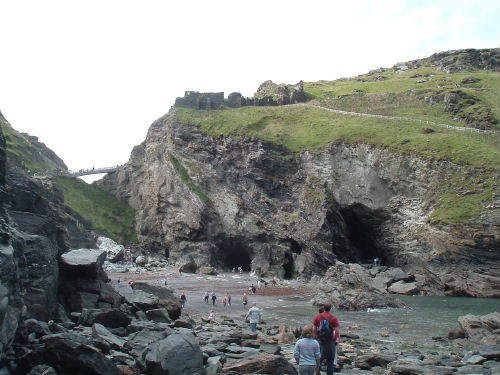


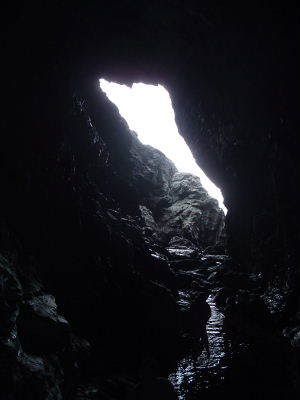
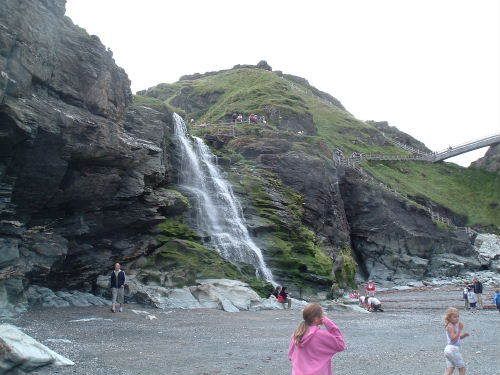

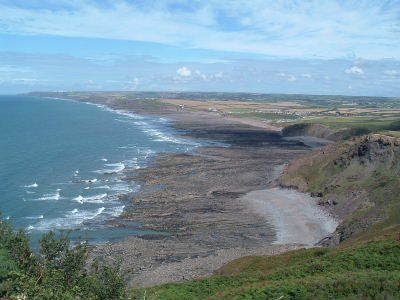
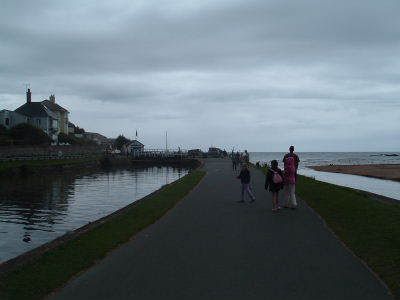
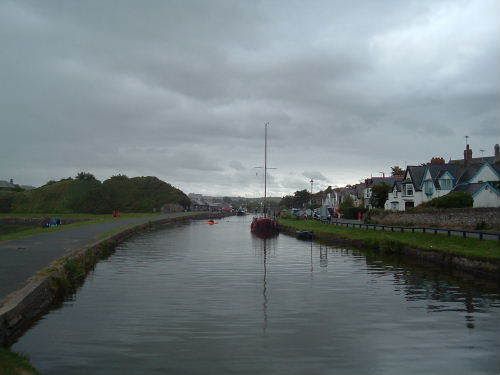
Labels: Devon
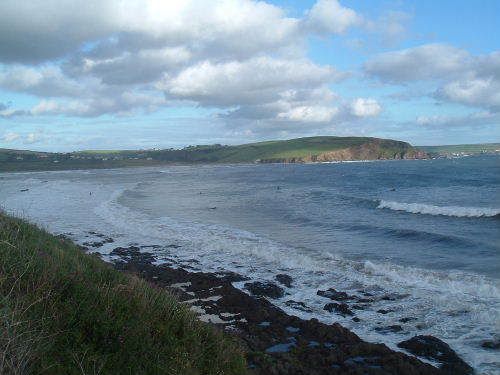
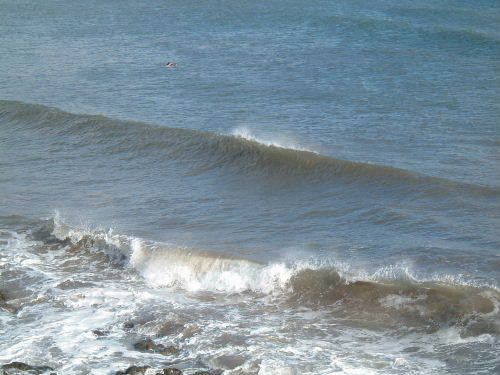
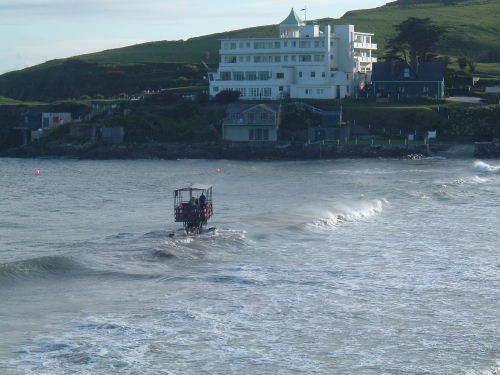
Labels: Devon
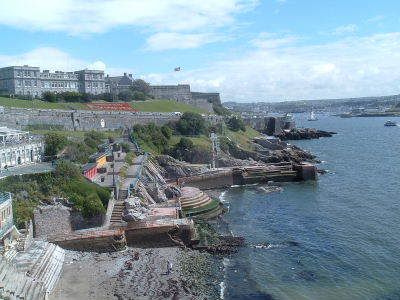
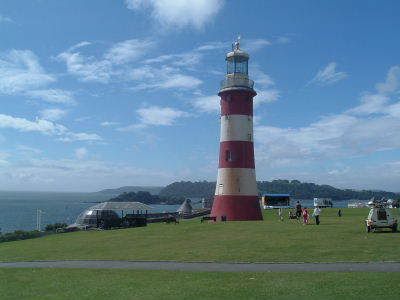
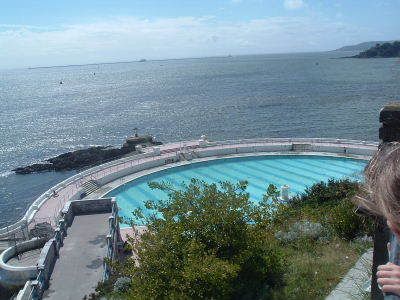
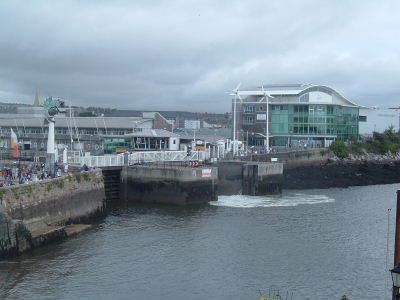
Labels: Devon
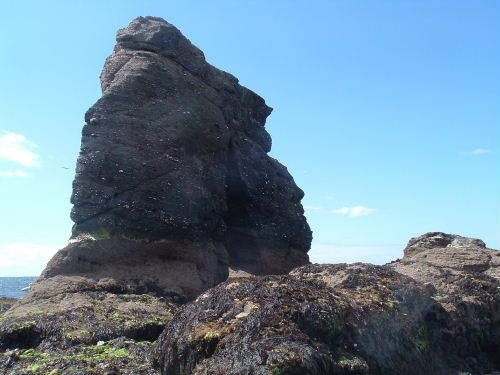
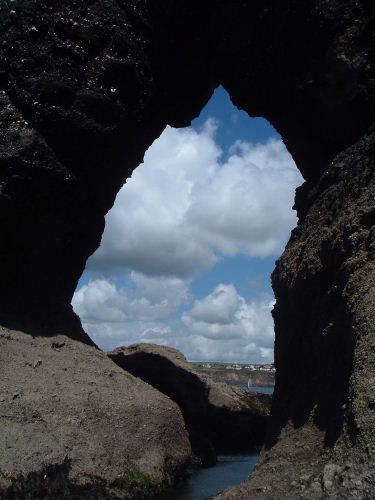
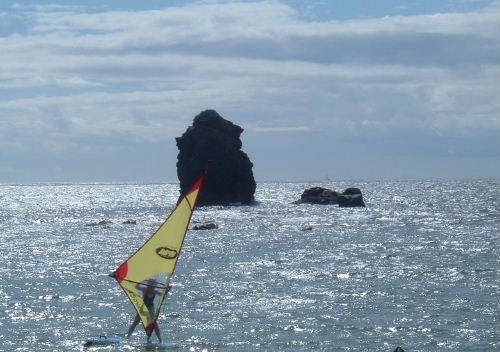
Labels: Devon
The main flight of 17 locks forms part of a longer series of 29 locks. The total rise is 237 feet in just 2 miles (72 m in 3.2 km) or a 1 in 30 gradient, making Caen Hill the steepest flight of locks in the world. The locks come in three groups: six at Foxhangers, seventeen at Caen Hill and six at the town end of the flight. Whilst the locks were under construction in the early 1800s a tramroad provided a link between Foxhangers, at the bottom of the flight, and Devizes at the top, the remains of which can be seen in the towpath arches in the road bridges over the canal. Because a large volume of water is needed for the locks to operate a back pump was installed at Foxhangers in 1996, capable of returning 32 million litres of water per day to the top of the flight which is equivalent to one lockful every eleven minutes.[1] They were engineer John Rennie's solution to climbing the very steep hill, and were the last part of the 87 mile route of the canal to be completed. Because of the steepness of the terrain there was not the space to use the normal arrangement of water pounds between the locks. As a result, the 16 locks have unusually large sideways-extended pounds to store the water needed to operate.~Wikipedia
In the early 19th century, 1829-43, the flight was lit by gas lights.[2]
The locks take 5-6 hours to travel in a boat and lock 41 is the narrowest on the canal.[3]
After the coming of the railways, the canal fell into disuse, and closed. From the 1960s there was a major clearing and rebuilding operation, culminating in a visit by Queen Elizabeth II in 1990 to officially open the new locks and the flight (although the flight had been navigable for a number of years before then).
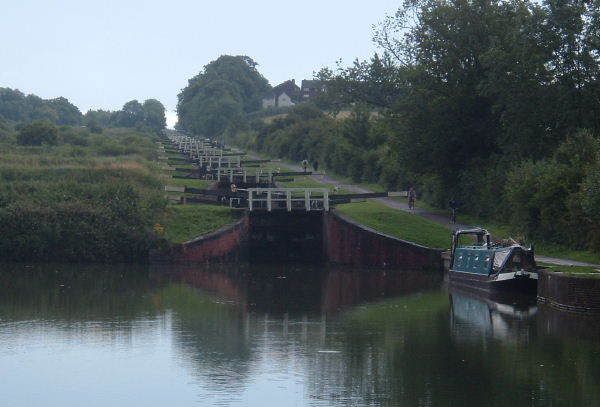
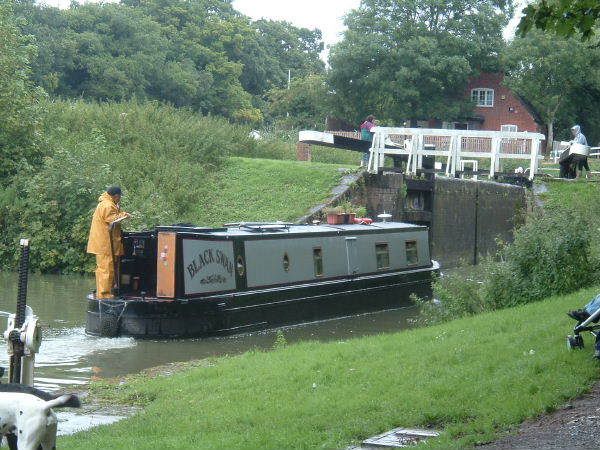
Labels: Wiltshire
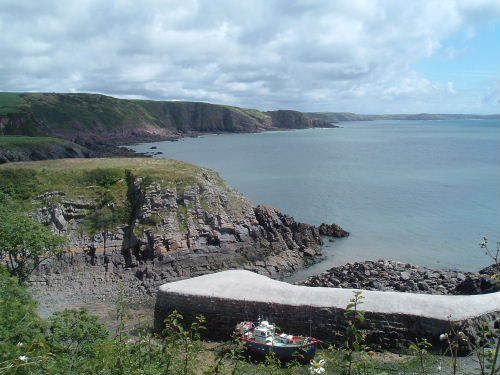
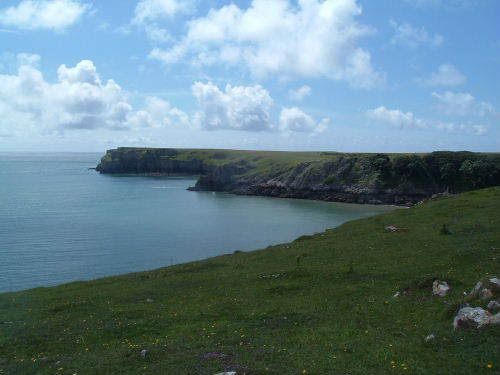
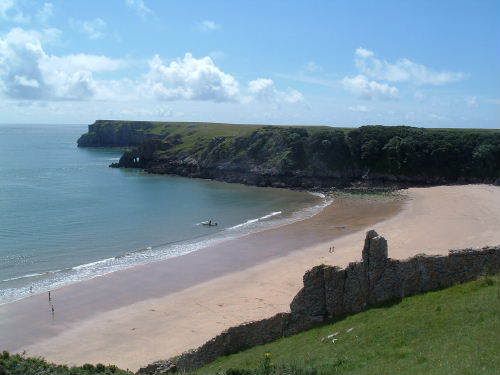
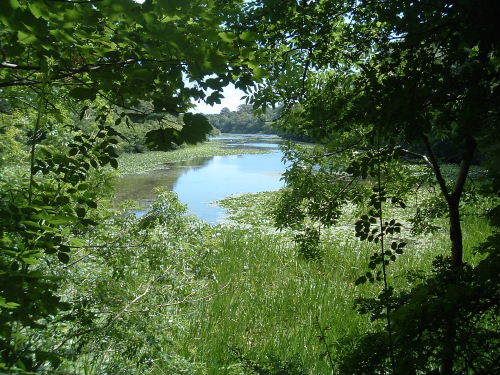
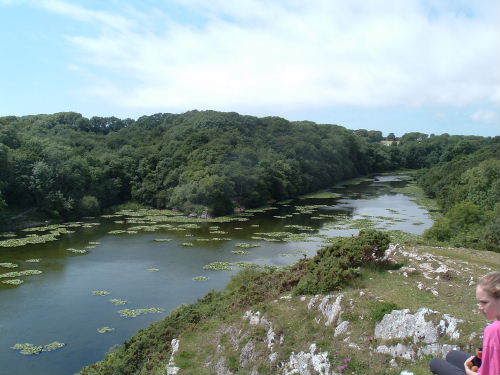
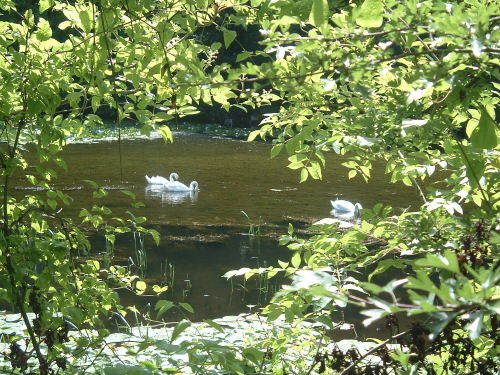
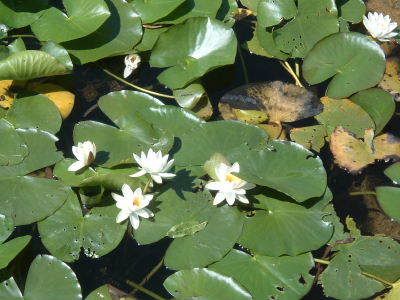
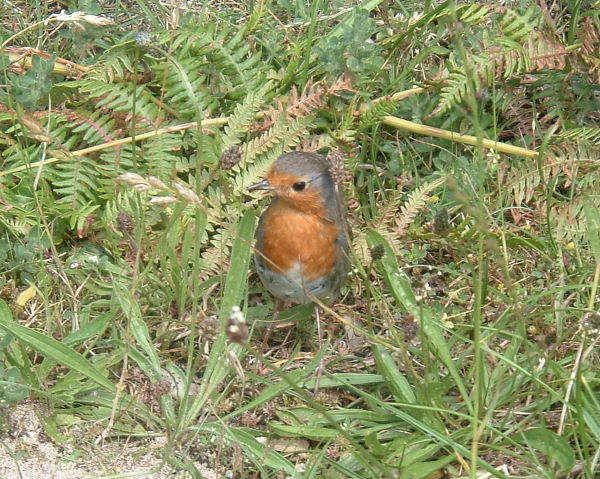
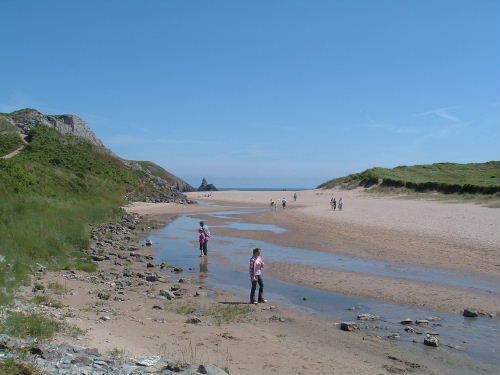
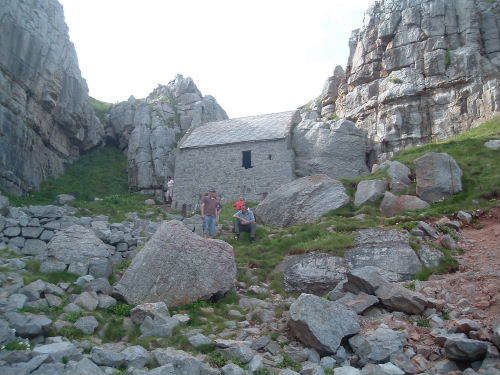
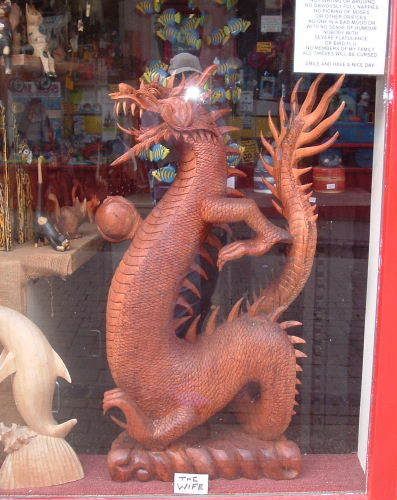
Labels: Pembrokeshire, Wales
May 2004 June 2004 August 2004 March 2005 May 2005 August 2005 June 2007 July 2007 September 2007 September 2008